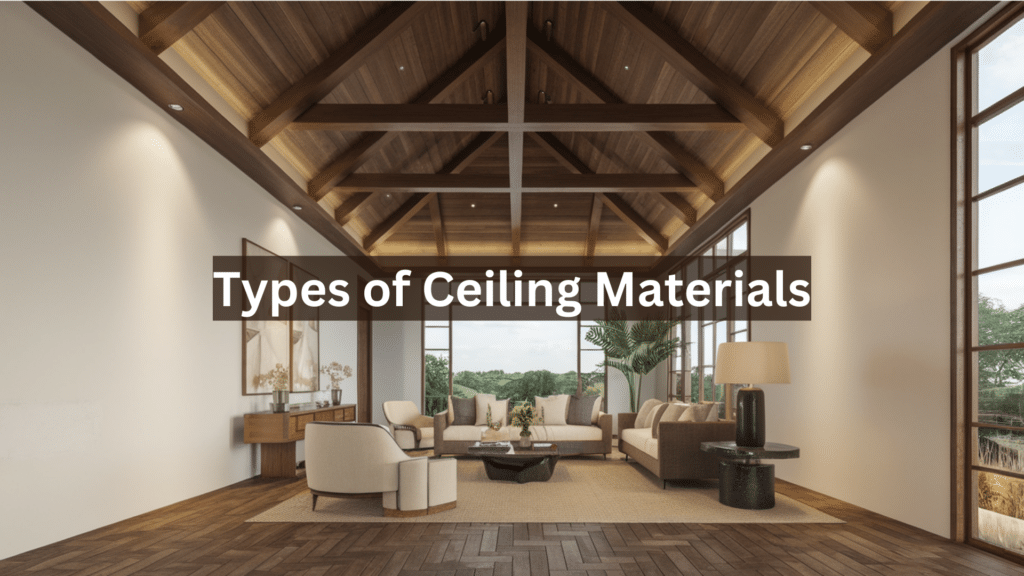Looking for the right ceiling material for your home? Over 15 years of renovations, I’ve tested and installed nearly all of these options in my own houses. This guide covers everything from budget-friendly drywall to luxury glass panels, with honest pros and cons for each.
I remember staring at my first ceiling project, feeling completely lost. You won’t have that problem. I’ll help you find the perfect ceiling material for your space, budget, and skill level.
As a DIY enthusiast, I’ve seen which materials actually hold up over time. The fancy options aren’t always better! Some of my most successful ceiling projects cost under $200 for an entire room.
Whether you’re fixing water damage, soundproofing a room, or just wanting a fresh look, the right ceiling can make a huge difference in how your space feels.
How Ceiling Installation Works
Ceiling installation isn’t as hard as you might think. Most ceiling materials attach to either a joist (the wooden beams above your ceiling) or to a framework that hangs from these joists. What is the big difference between ceiling and wall work? You’re working overhead – which makes good preparation absolutely critical.
Basic Materials You’ll Likely Need
- Measuring tape and pencil
- Safety glasses and dust mask
- Drill with various bits
- Hammer
- Utility knife
- Level
- Drywall lift (for drywall installation)
- Caulk and caulking gun
Typical Installation Steps
- Measure your ceiling area and buy materials with 10% extra for mistakes.
- Remove old ceiling material if needed.
- Locate and mark ceiling joists – these are your anchor points.
- Install any needed framework, like furring strips or a drop ceiling grid.
- Cut your ceiling material to size.
- Attach the material to joists or framework.
- Finish the seams with tape, caulk, or trim.
- Apply paint or sealant as needed.
Budget-Friendly & DIY-Friendly Ceiling Materials
Not every ceiling upgrade has to cost a fortune. These materials are affordable, easy to work with, and perfect for anyone tackling a project independently.
1. Drywall (Gypsum Board)
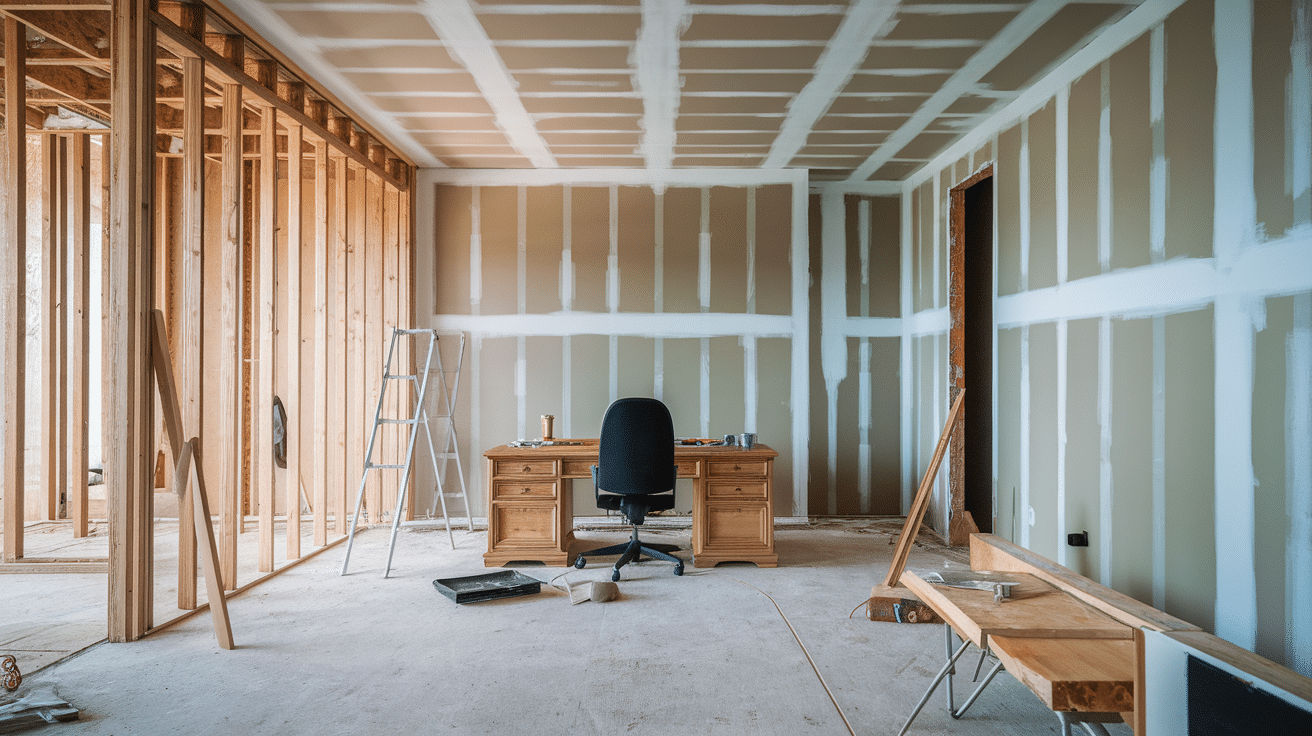
I put up drywall in my first home’s basement ceiling. It took a weekend, but the clean look was worth it. The hardest part was holding the panels up while attaching them – definitely get a friend to help or rent a drywall lift.
- Easy to install, paint, and repair.
- It’s basic but reliable.
- Good for: Bedrooms, hallways, and living rooms.
2. Plywood Panels
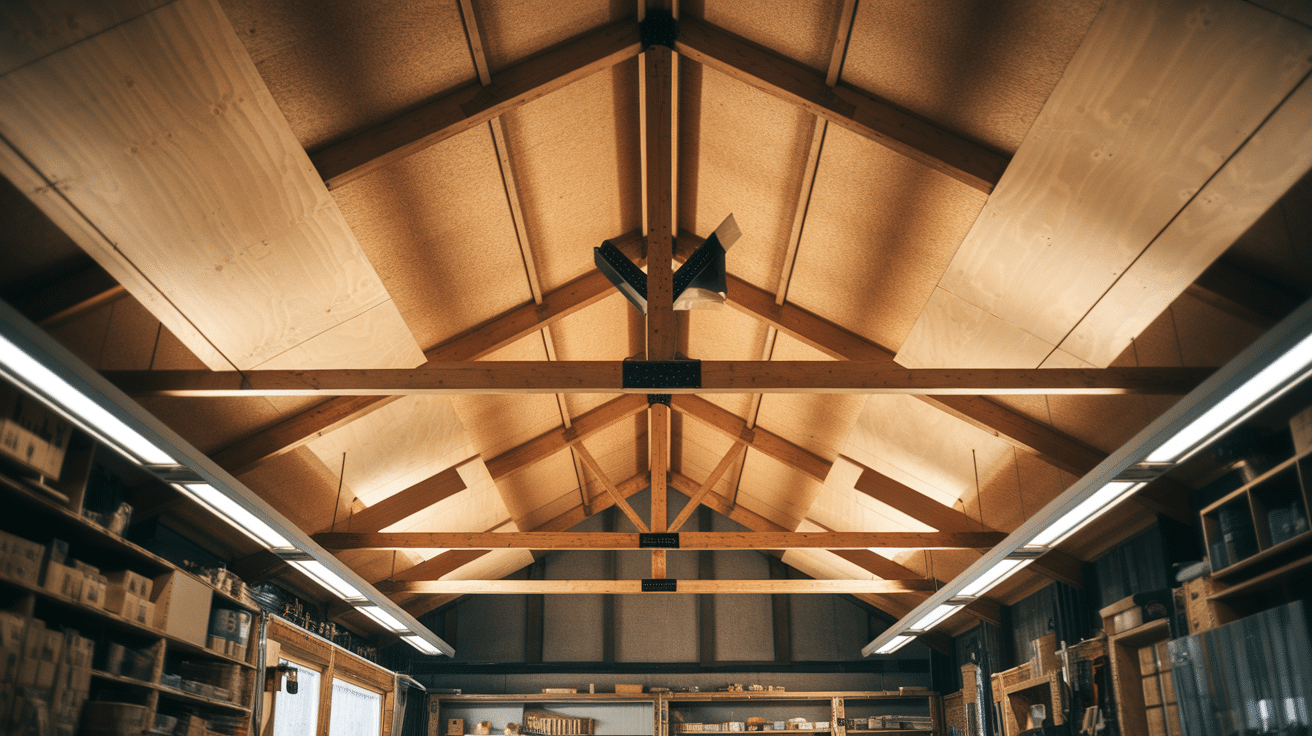
My workshop ceiling uses 1/4-inch plywood panels with a light stain. They’ve held up for years despite temperature changes, and the wood grain adds character without breaking the bank.
- It is inexpensive and easy to work with.
- It can be stained or painted.
- Good for: Garages, workshops, or modern rustic homes.
3. PVC Panels
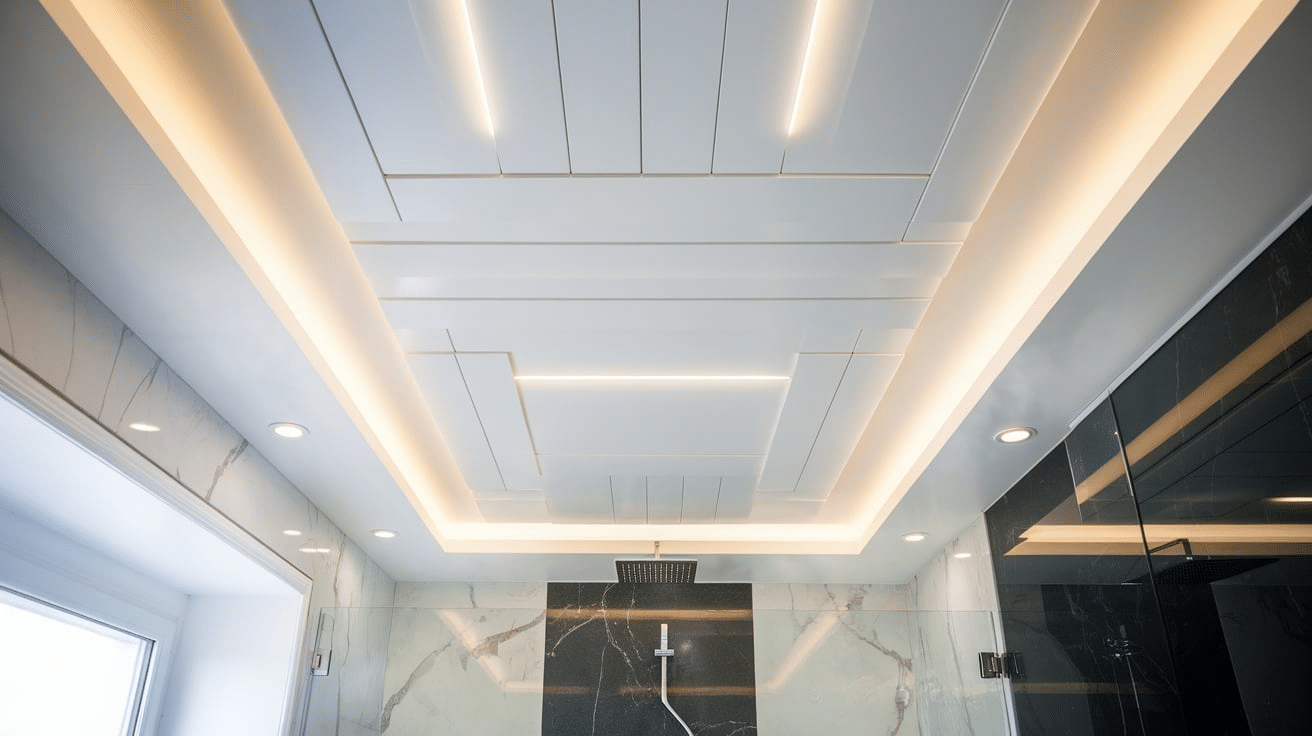
After a pipe burst in my upstairs bathroom, I installed PVC panels in the new ceiling. Five years later, they still look great despite occasional steam and moisture. Plus, they wipe clean easily.
- Water-resistant and lightweight.
- Click-and-lock options make it easy for DIYers.
- Good for: Bathrooms, laundry rooms, basements.
4. Acoustic Tiles
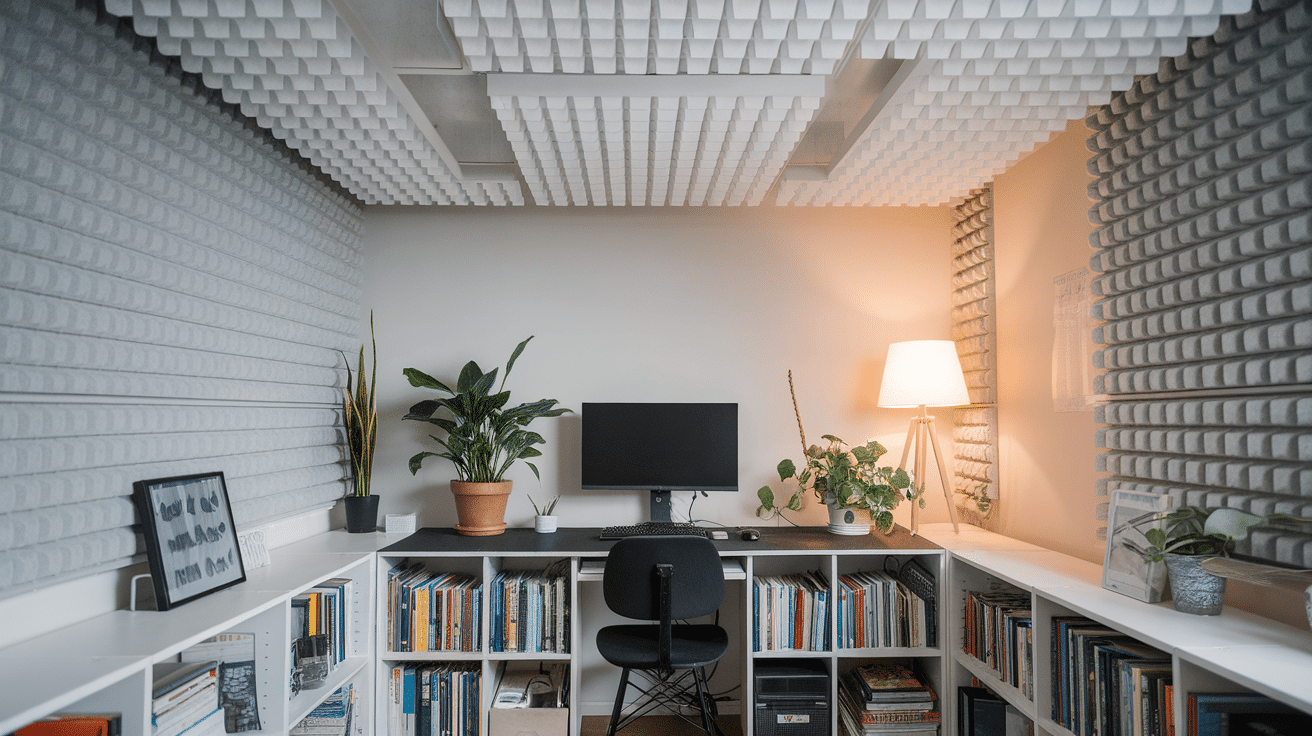
When I set up my home office, outside noise was a big problem. Acoustic tiles cut the sound by about half. Installation took just an afternoon since they dropped into a simple grid system.
- Usually part of a drop ceiling grid.
- Great for sound absorption.
- Good for: Home offices, basements, apartments.
5. Fiber Cement Boards
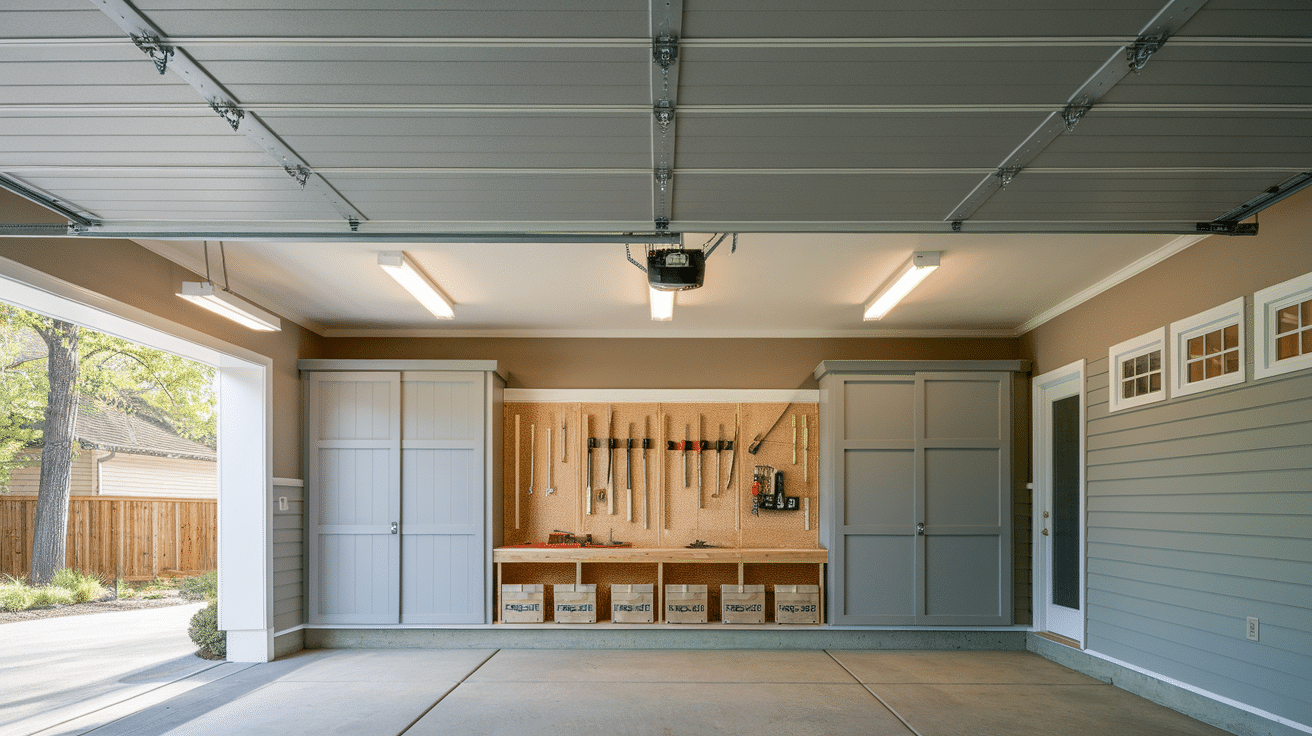
I installed fiber cement boards in my attached garage ceiling after a small fire in the neighborhood made me think about safety. They’re heavier than drywall but give me peace of mind with their fire-resistant properties.
- Fire-resistant and sturdy.
- Great for utility spaces and areas needing extra protection.
- Good for: Garages, workshops, utility rooms.
Classic & Timeless Materials
Some ceiling materials never go out of style. These classics add charm, warmth, or elegance — and they’ve stood the test of time in homes of all kinds.
6. Plaster
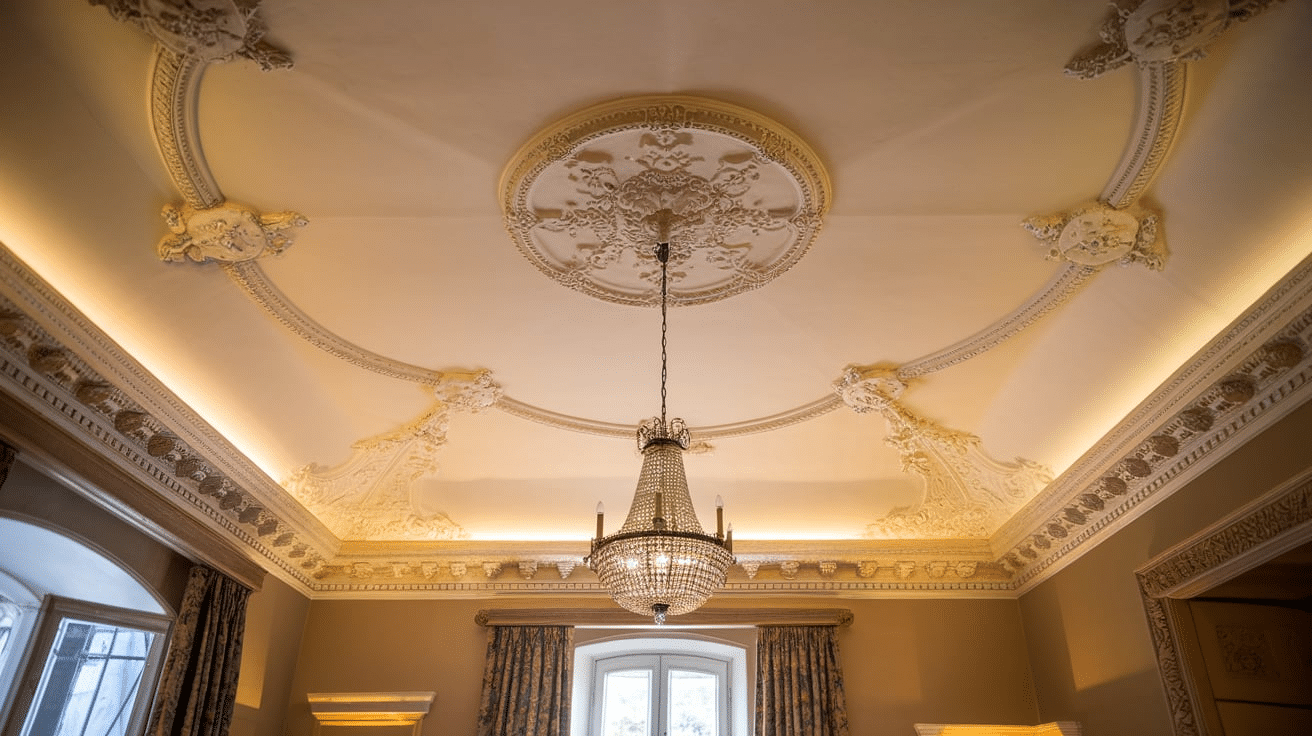
My 1920s home had original plaster ceilings. They’re beautiful, but when cracks appeared, they required professional help. The smooth, seamless look is hard to match with modern materials.
- Durable and smooth finish.
- Ideal for historic homes or traditional styles.
- Labor-intensive, usually not DIY-friendly.
- Good for: Dining rooms, older homes.
7. Wood Planks
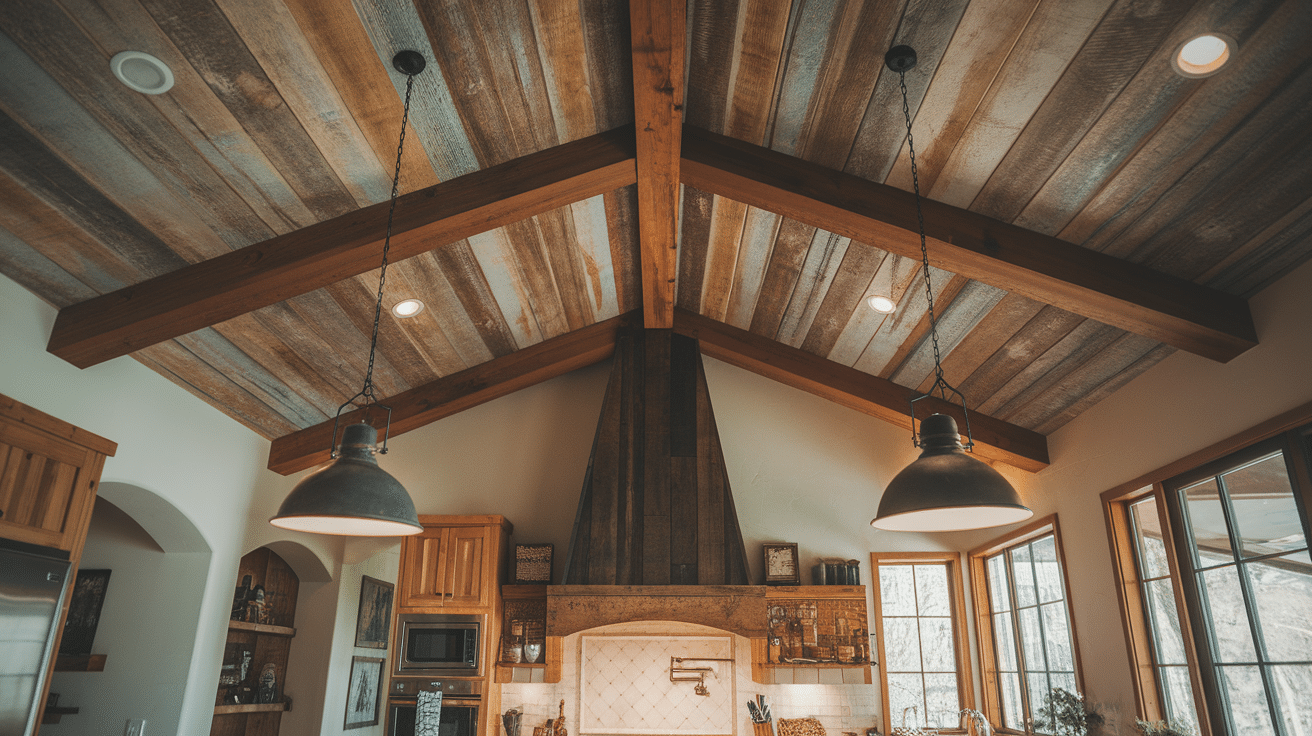
I used pine tongue-and-groove planks in my kitchen ceiling. The planks have darkened slightly with age, which only adds to their charm. The material was mid-range in price but transformed the room completely.
- Adds warmth and texture.
- Comes in tongue-and-groove or shiplap.
- Good for: Bedrooms, kitchens, or cozy cabins.
8. Coffered Ceilings (Wood or MDF Grid)
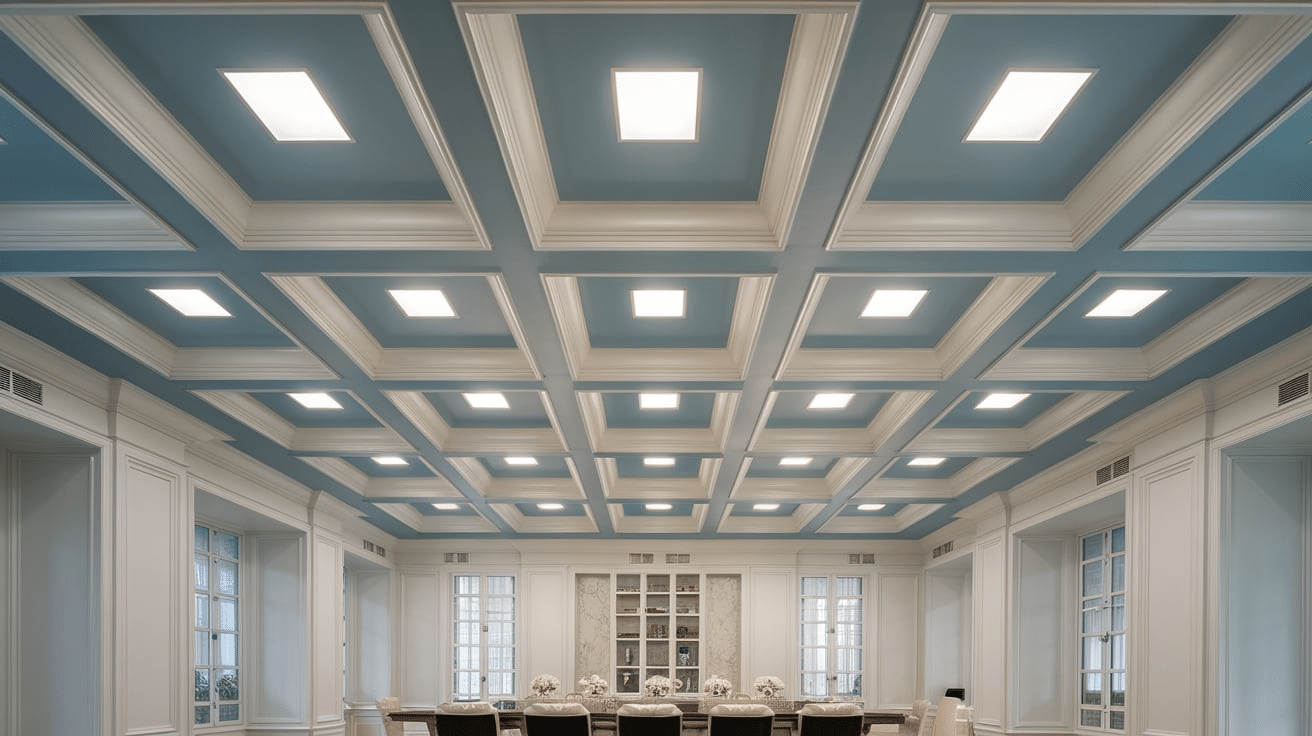
My most ambitious project was the coffered ceiling in my dining room. I used MDF to keep costs down, but once painted, guests can’t tell it’s not solid wood. It took two weekends but raised the home’s value significantly.
- Adds architectural interest.
- It can be done with real wood or faux beams.
- Good for: Formal spaces like dining rooms or home libraries.
9. Beadboard

My guest bathroom ceiling has a beadboard that gives it a charming, vintage feel. The panels were fairly easy to work with, and the texture added interest to a small space without being too busy.
- Classic, cottage-style look.
- Available in panels for easier installation.
- Good for: Porches, bathrooms, and country-style kitchens.
Moisture-Resistant & Outdoor Options
If your ceiling needs to handle humidity, splashes, or changing temperatures, the right material makes all the difference. These options are built to last in bathrooms, basements, patios, and more.
10. Concrete (Exposed or Finished)

When I renovated my loft, I decided to keep the exposed concrete ceiling. I sealed it to prevent dust and had lighting tracks installed. It’s practically maintenance-free and fits the space perfectly.
- Industrial and modern.
- Durable and naturally moisture-resistant.
- Good for: Lofts, basements, modern homes.
11. Bamboo or Woven Reed Panels
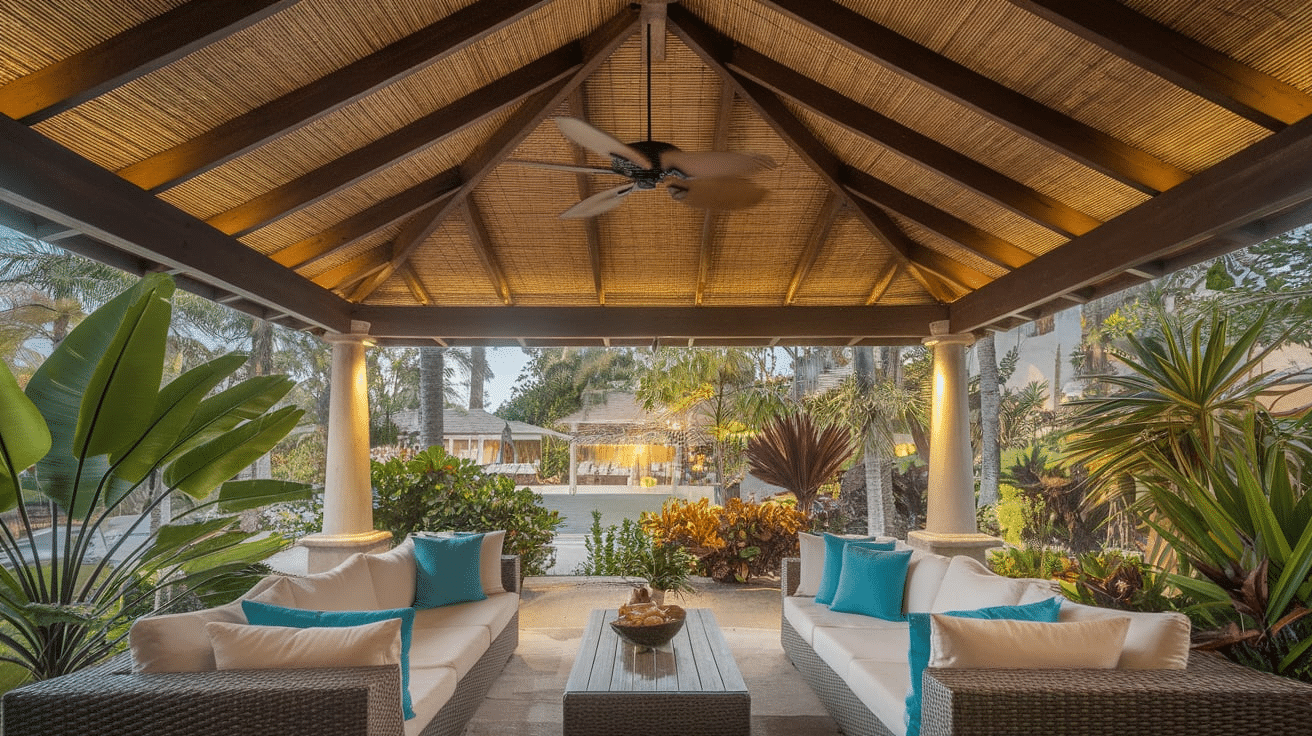
My covered patio has woven reed ceiling panels. They’ve survived three years of humidity and seasonal changes. The natural look brings a vacation feel to the space, and they were surprisingly affordable.
- Natural, breathable, and sustainable.
- Use a frame to attach panels securely.
- Good for: Porches, sunrooms, and beachy or tropical vibes.
12. Vinyl-Coated Fiberglass Mesh
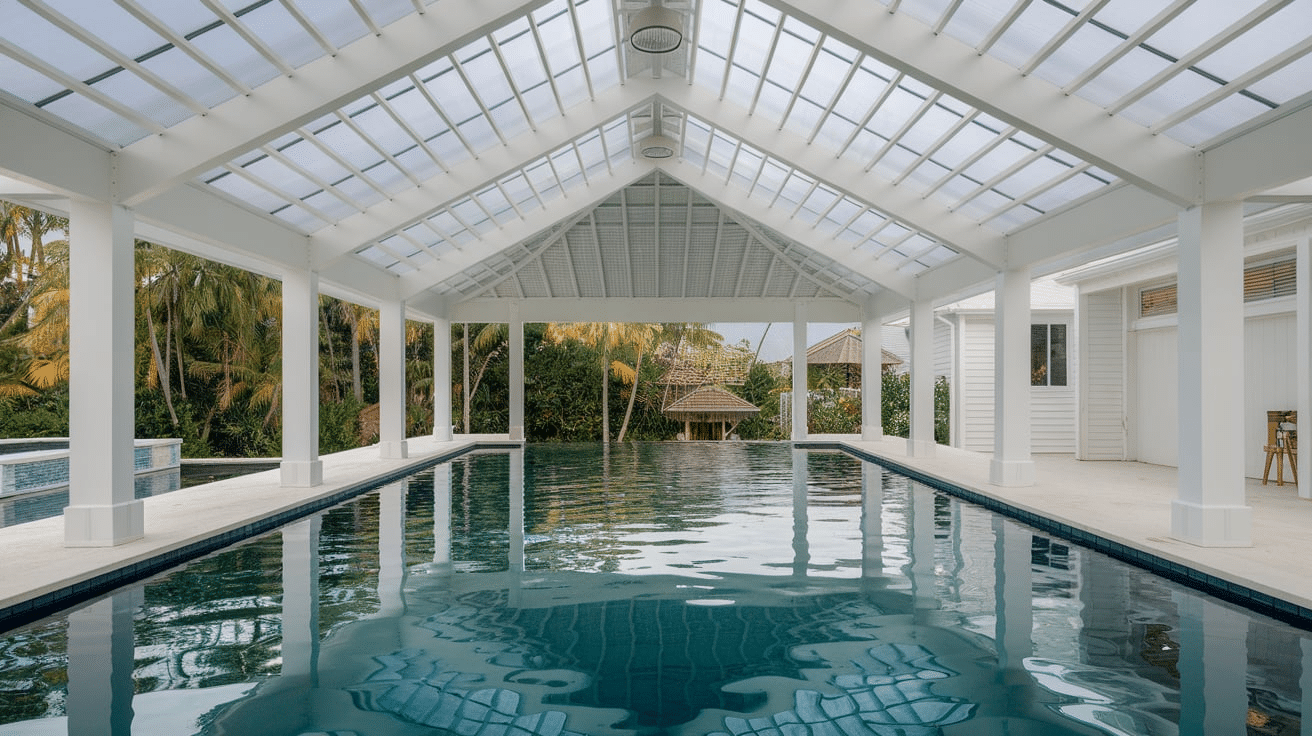
For my pool house, I chose vinyl-coated fiberglass mesh for the ceiling. After three summers of high humidity and splashing, it still looks brand new. The material lets air move through while keeping bugs and debris out.
- Ultra-resistant to moisture and mold.
- Often used in outdoor or high-humidity spaces.
- Good for: Pool houses, outdoor living areas, humid climates.
Statement-making or High-End Materials
Do you want your ceiling to wow people the moment they look up? These materials don’t just cover your ceiling — they turn it into a design feature.
13. Metal Tiles (Tin or Aluminum)
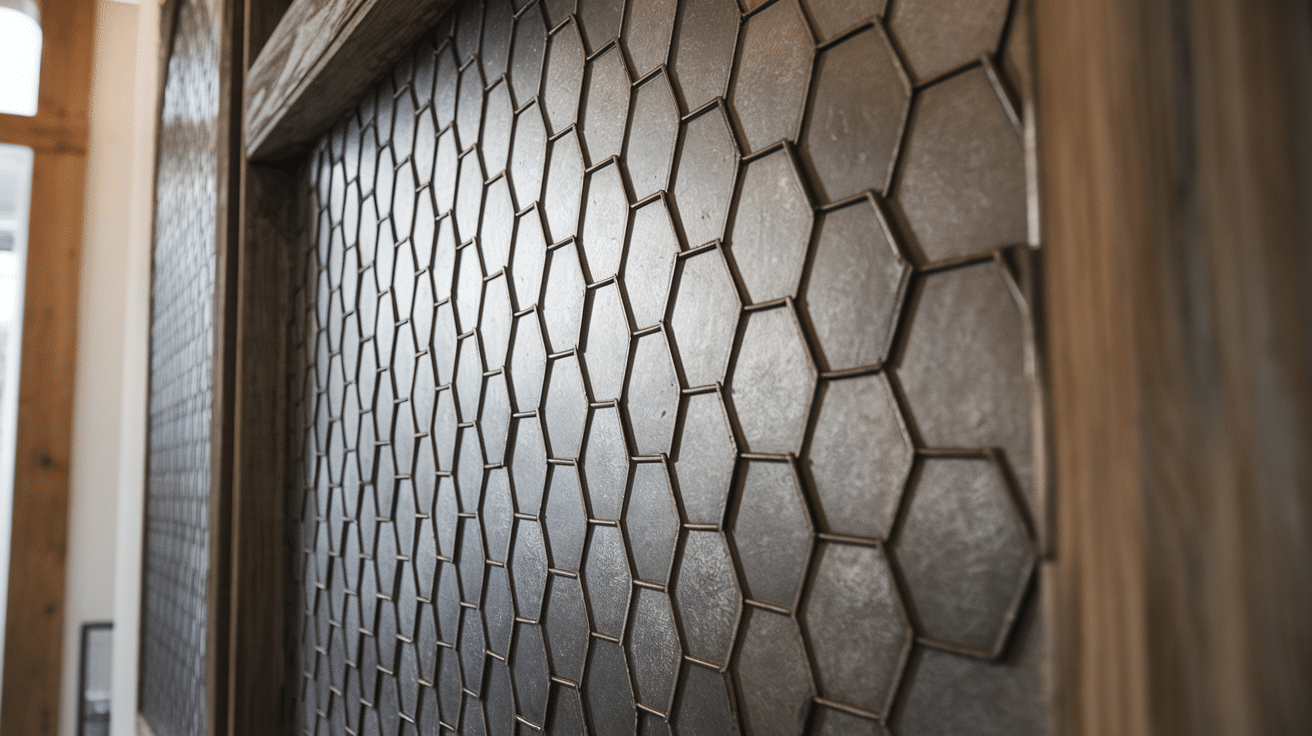
I splurged on tin ceiling tiles for my kitchen and don’t regret it. They reflect light beautifully and have become the focal point of the room. Installation wasn’t difficult, but the materials cost more than standard options.
- Reflective, patterned, and dramatic.
- Often used in vintage or art deco interiors.
- Good for: Kitchens, dining rooms, or ceilings with flair.
14. Stretch Ceilings (PVC Membrane)
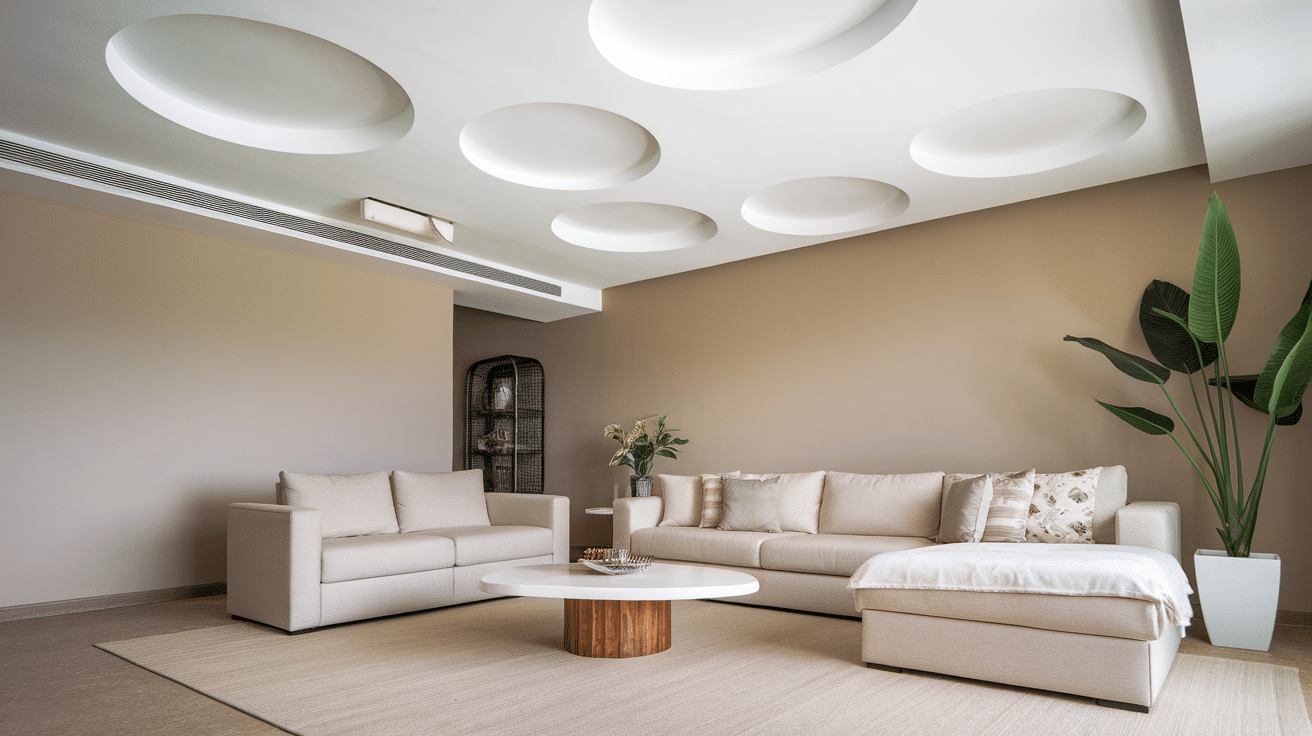
My friend’s media room has a backlit stretch ceiling with a starry night print. It was expensive and required professional installation, but the effect was stunning. The ceiling seems to glow from within.
- High-gloss, matte, or printed options.
- Installed by pros — can be backlit.
- Good for: Luxury homes, modern builds.
15. Glass Panels

My entryway has two small glass ceiling panels that let in light from the second floor. They’re tempered safety glass and completely changed how bright the space feels. It was a splurge but worth every penny.
- Brings in natural light or adds a sleek detail.
- Can be frosted or tinted.
- Good for: Sunrooms, atriums, modern entries.
16. Mirror Ceilings
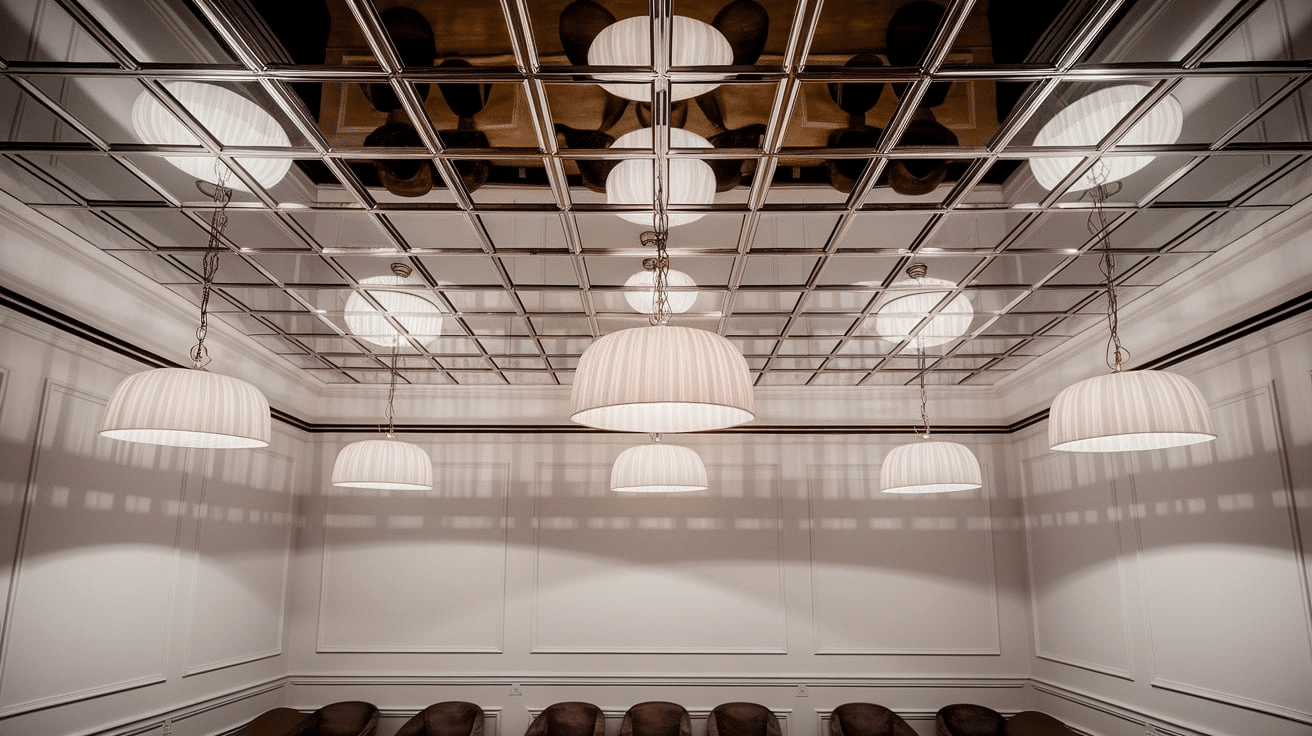
I used mirror panels in my tiny powder room ceiling. The space instantly felt twice as large, and the reflective quality makes even a single light fixture more effective. Smudges show easily, though, so be ready for maintenance.
- Visually expands small spaces.
- Bold and a bit glamorous.
- Good for: Powder rooms, walk-in closets, or boutiques.
17. Cork Panels
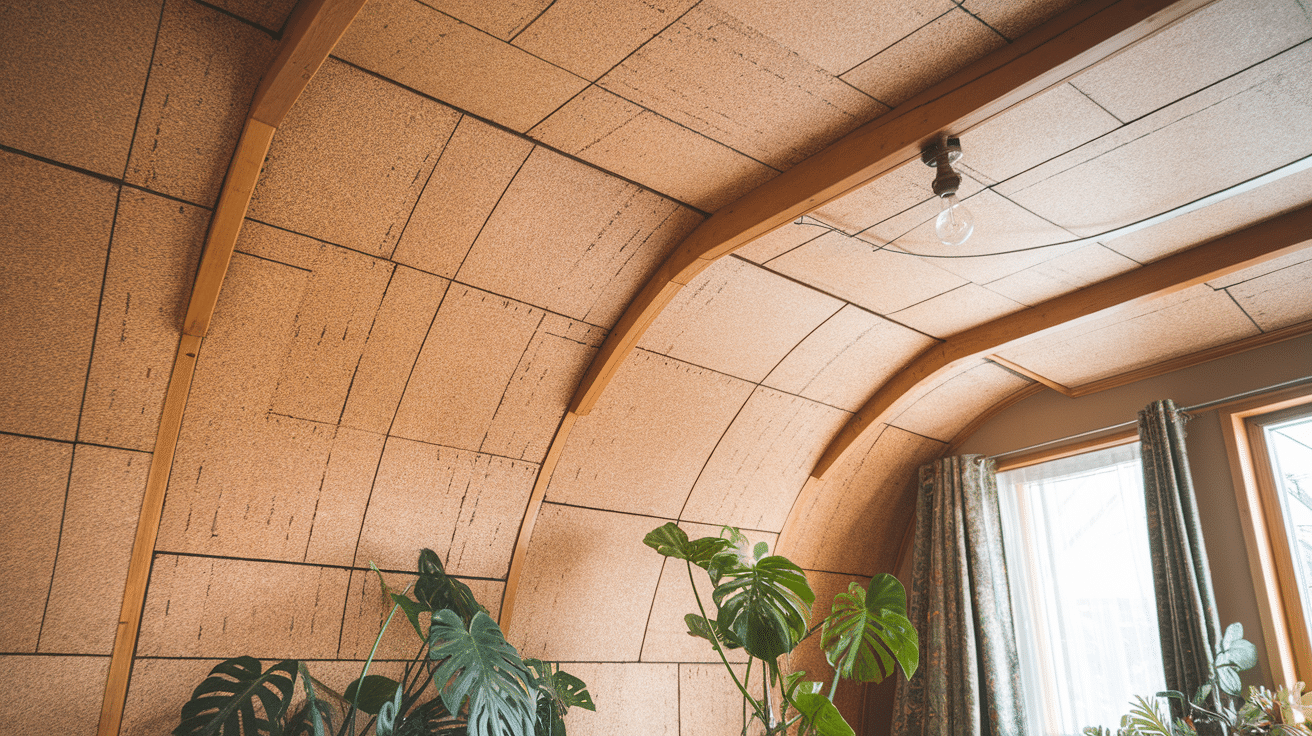
When I made a music room for my kids, I installed cork ceiling panels. They help control the sound while adding a warm, natural texture. The panels were easy to glue directly to the existing ceiling and have held up well.
- Natural sound dampening properties.
- Warm, organic look and feel.
- Good for: Music rooms, home theaters, bedrooms.
Which Ceiling Material Is Right for You?
The best ceiling material matches both your space’s needs and your budget. For wet areas, stick with moisture-resistant options like PVC or concrete. For visual interest, consider wood, metal, or coffered designs. And if you’re on a tight budget, drywall with a creative paint job can work wonders.
- Think about maintenance, too. Some materials (like fabric or wood) might need replacing sooner than others (like concrete or metal).
- Light reflection matters – dark ceilings make rooms feel cozier but smaller, while light or reflective materials open up the space.
- Your own skill level should guide your choice if you’re doing the work yourself. Start with more forgiving materials like acoustic tiles or PVC panels if you’re a beginner.
Conclusion
Too many people forget that their ceiling is the fifth wall. I’ve installed all 17 of these materials, and each transforms a room in its way. The right choice comes down to three things: your budget, your space’s needs, and the look you want.
If you’re new to DIY, start simple. Even basic drywall looks fresh when done right. For problem areas, pick materials that solve your specific issues—acoustic tiles for noise, PVC for moisture, and glass for dark spaces.
Don’t rush your decision. Live with samples in your space for a few days. Watch how light plays on them at different times. The perfect ceiling material will complement your home’s style while solving real problems.
What matters most is starting. Your ceiling project might seem daunting now, but the results will be worth it.
Frequently Asked Questions
How Much Do Different Ceiling Materials Cost per Square Foot?
Prices range widely from $1-2/sq ft for basic drywall to $20+/sq ft for high-end options like stretch ceilings or detailed coffered designs.
Can I Install a New Ceiling Over an Existing One?
It depends. Some materials, like drop ceilings, can go over existing ceilings, but others require removing the old material first.
Which Ceiling Types Are Best for Soundproofing?
Acoustic tiles, cork, and double-layered drywall with soundproofing materials work best for reducing noise.
How Do I Know If I Can Diy My Ceiling or Need a Professional?
If you’ve done basic home improvement projects before, you can handle drywall, acoustic tiles, and some wood options. Specialized materials like stretch ceilings and plaster usually require pros.
What’s the Easiest Way to Dress up My Existing Ceiling without Replacing It?
Paint, crown molding, or stick-on ceiling tiles can transform an existing ceiling with minimal effort.

